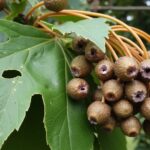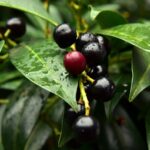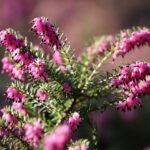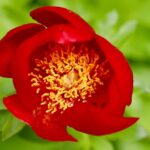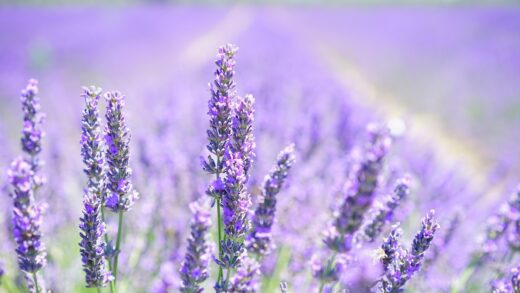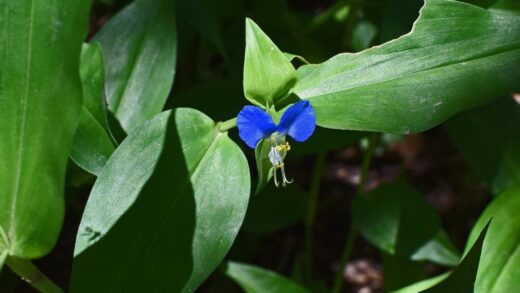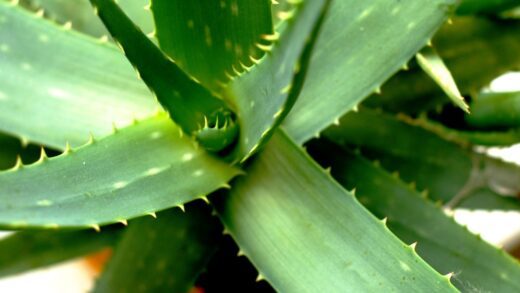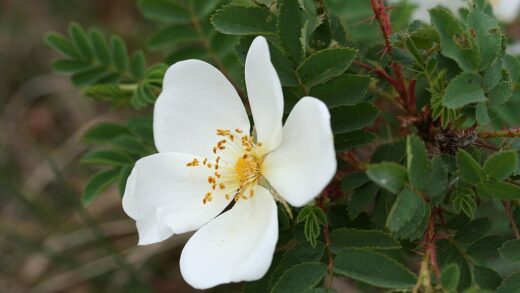While Darwin’s barberry is renowned for its toughness and general resistance to many common garden ailments, it is not entirely immune to problems. A healthy, well-cared-for plant growing in its preferred conditions is the best defense, as stressed plants are always more susceptible to attack. Proactive monitoring and good garden hygiene are the cornerstones of preventing significant issues with diseases and pests. By regularly inspecting your shrub and understanding the signs of common problems, you can intervene early, often with simple, non-chemical methods, to keep your plant thriving and beautiful. Recognizing that prevention is always better than cure is the mindset of a successful gardener.
The most common diseases that can affect Darwin’s barberry are fungal in nature, often thriving in conditions of high humidity, poor air circulation, and wet foliage. These include rust, powdery mildew, and various leaf spot diseases. The spiny, dense foliage of the shrub can sometimes create a microclimate that is conducive to these problems if not managed correctly. Therefore, cultural practices such as proper plant spacing to ensure good airflow and watering at the base of the plant to keep leaves dry are critically important preventative measures. These simple steps can dramatically reduce the likelihood of fungal pathogens taking hold.
On the pest front, Darwin’s barberry is generally not a primary target for many insects, partly due to its tough, spiny leaves. However, it can occasionally play host to sap-sucking insects like aphids, especially on the soft, new growth that emerges in spring. Scale insects can also sometimes be found on the stems. While large infestations are uncommon, it is wise to be vigilant and check the plant periodically, particularly the undersides of leaves and in dense areas of foliage where pests may seek shelter and hide from view.
Ultimately, an integrated pest management (IPM) approach is the most sustainable and effective way to care for your barberry. This involves using cultural and mechanical controls first, such as pruning out affected areas or using a strong jet of water to dislodge aphids. Chemical treatments should always be a last resort, and if necessary, choosing the least toxic option, such as insecticidal soap or horticultural oil, is preferable to protect beneficial insects and the wider garden ecosystem. A healthy garden is a balanced ecosystem, and promoting this balance is the best long-term strategy for pest and disease control.
Common fungal diseases
One of the most recognizable fungal diseases that can affect barberry species is rust. Caused by a pathogen from the Puccinia genus, it manifests as distinctive orange, yellow, or brownish pustules, typically on the undersides of the leaves. In severe infections, these pustules can also appear on the upper leaf surfaces and even on the stems. Rust fungi have complex life cycles and can weaken the plant over time by interfering with photosynthesis, leading to premature leaf drop and reduced vigor if left unchecked.
Powdery mildew is another common fungal issue, particularly in late summer when warm days are followed by cool, humid nights. This disease is easily identified by the characteristic white, dusty, or talcum-like coating that appears on the surfaces of leaves, stems, and sometimes flowers. While it may look unsightly, powdery mildew is often more of a cosmetic issue for a healthy barberry and rarely causes serious harm. However, a severe, persistent infection can stress the plant and make it more vulnerable to other problems.
Leaf spot diseases, caused by a variety of different fungi, can also occur. These appear as discrete spots or blotches on the foliage, which can vary in color from brown to black and may sometimes have a colored border. As the disease progresses, the spots can merge, and the affected leaf tissue may die and fall out, creating a “shot-hole” appearance. Similar to other fungal issues, leaf spot is most prevalent in damp, crowded conditions. While minor spotting is not a major concern, widespread infection can lead to significant defoliation.
The best defense against all these fungal diseases is prevention through good cultural practices. Ensure your Darwin’s barberry is planted in a location with good air circulation and adequate sunlight. Avoid overhead watering, and if you must use a sprinkler, do so in the morning so the leaves have time to dry quickly. Prune to thin out any overly dense areas of the shrub to improve airflow through the canopy. In the autumn, be sure to rake up and destroy any fallen leaves from around the plant, as many fungal spores can overwinter on this debris to reinfect the plant the following spring.
Identifying and managing common pests
Aphids are perhaps the most likely pest you will encounter on a Darwin’s barberry. These small, pear-shaped, sap-sucking insects tend to congregate in clusters on the soft, succulent new growth and flower buds in the spring. Their feeding can cause distortion and curling of the leaves and can weaken the new shoots. Aphids also excrete a sticky substance called honeydew, which can lead to the growth of sooty mold, a black fungus that, while not directly harmful, is unsightly and can block light from the leaves.
For small infestations of aphids, the control is often simple and mechanical. A strong jet of water from a hose is usually sufficient to dislodge them from the plant. You can also manually wipe them off with your fingers or a cloth. Encouraging natural predators in your garden, such as ladybugs, lacewings, and hoverflies, is the best long-term, sustainable solution. These beneficial insects are voracious predators of aphids and will help to keep their populations in check naturally.
Scale insects are another type of sap-sucking pest that can occasionally affect barberry. These insects are more subtle than aphids, appearing as small, immobile bumps on the stems and undersides of leaves. They protect themselves under a hard, waxy shell, which makes them more difficult to control with contact insecticides. A minor infestation may not cause significant harm, but a heavy presence can lead to a decline in the plant’s vigor, yellowing leaves, and branch dieback.
Managing scale insects often requires a more targeted approach. During their juvenile “crawler” stage in late spring, they are most vulnerable. Applications of horticultural oil or insecticidal soap at this time can be effective at smothering them. For established adult scales, you may need to physically scrub them off with a soft brush or a cloth dipped in soapy water. Pruning out heavily infested branches can also help to reduce the population and prevent its spread to other parts of the shrub.
Bacterial diseases and other issues
While fungal diseases are more common, Darwin’s barberry can occasionally be affected by bacterial diseases, such as bacterial leaf spot. The symptoms can be similar to fungal leaf spots, but they often appear more angular, being limited by the leaf veins, and may look water-soaked, especially in the early stages. These spots can also exude a bacterial ooze in humid conditions. As with fungal diseases, bacterial pathogens thrive in wet environments, making moisture management a key preventative measure.
There is generally no effective chemical cure for bacterial diseases on landscape plants, so prevention and management are centered on cultural practices. Avoid working with or pruning plants when their foliage is wet, as this can easily spread the bacteria from one part of the plant to another, or from plant to plant. Sterilizing your pruning tools with rubbing alcohol or a bleach solution between cuts, and especially between plants, is a crucial step in preventing the transmission of bacterial and fungal pathogens. If an infection is identified, promptly prune out and destroy the affected plant material.
Beyond infectious diseases, Darwin’s barberry can also suffer from abiotic disorders, which are problems caused by environmental or cultural factors rather than pathogens or pests. For example, leaf scorch, characterized by browning and crisping along the leaf margins, can occur if the plant is exposed to excessive sun, drying winds, or insufficient water during hot weather. Winter burn, which has similar symptoms, can happen when the evergreen foliage loses water to dry winter winds while the ground is frozen, preventing the roots from replenishing the moisture.
Root problems are another major category of non-infectious issues. As previously discussed, poor drainage and waterlogged soil are the primary culprits, leading to root rot and the subsequent decline of the entire plant. Soil compaction can also be a problem, restricting root growth and access to oxygen and water. Ensuring the plant is sited in well-drained soil from the beginning and avoiding foot traffic over the root zone are the best ways to prevent these fundamental issues and maintain a healthy foundation for the shrub.
A preventative care strategy
The most effective approach to managing diseases and pests on Darwin’s barberry is to focus on prevention rather than reaction. This begins with selecting a healthy, disease-free plant and siting it in a location that meets its needs for sunlight, air circulation, and well-drained soil. A plant in the right place is naturally more vigorous and better equipped to fend off potential problems. Amending the soil with organic matter at planting time further boosts its health by creating a fertile and well-structured root environment.
Good garden hygiene is a critical component of a preventative strategy. Regularly remove any dead, damaged, or diseased wood from the shrub, as this can be a point of entry for pathogens. In the autumn, clean up fallen leaves and debris from around the base of the plant to eliminate overwintering sites for fungal spores and pests. Always dispose of diseased plant material in the trash or by burning; do not add it to your compost pile where the pathogens can survive and be spread back into the garden later.
Fostering biodiversity in your garden is another powerful preventative tool. By planting a variety of flowering plants that provide nectar and pollen throughout the season, you can attract and support a healthy population of beneficial insects. These natural predators, including ladybugs, lacewings, parasitic wasps, and predatory mites, will help to control pest populations like aphids and spider mites, creating a natural and self-regulating system of pest control that requires minimal intervention from the gardener.
Finally, a regular routine of monitoring your plants allows you to catch any potential issues at their earliest stages when they are easiest to manage. Make a habit of walking through your garden and closely inspecting your plants. Look under leaves, check the stems, and note any changes in color or vigor. By being observant and proactive, you can address a small aphid colony before it explodes in number or remove a few rust-infected leaves before the disease spreads. This vigilance is the key to maintaining a healthy and beautiful Darwin’s barberry.
📷 Michael Wolf, CC BY-SA 3.0, via Wikimedia Commons

